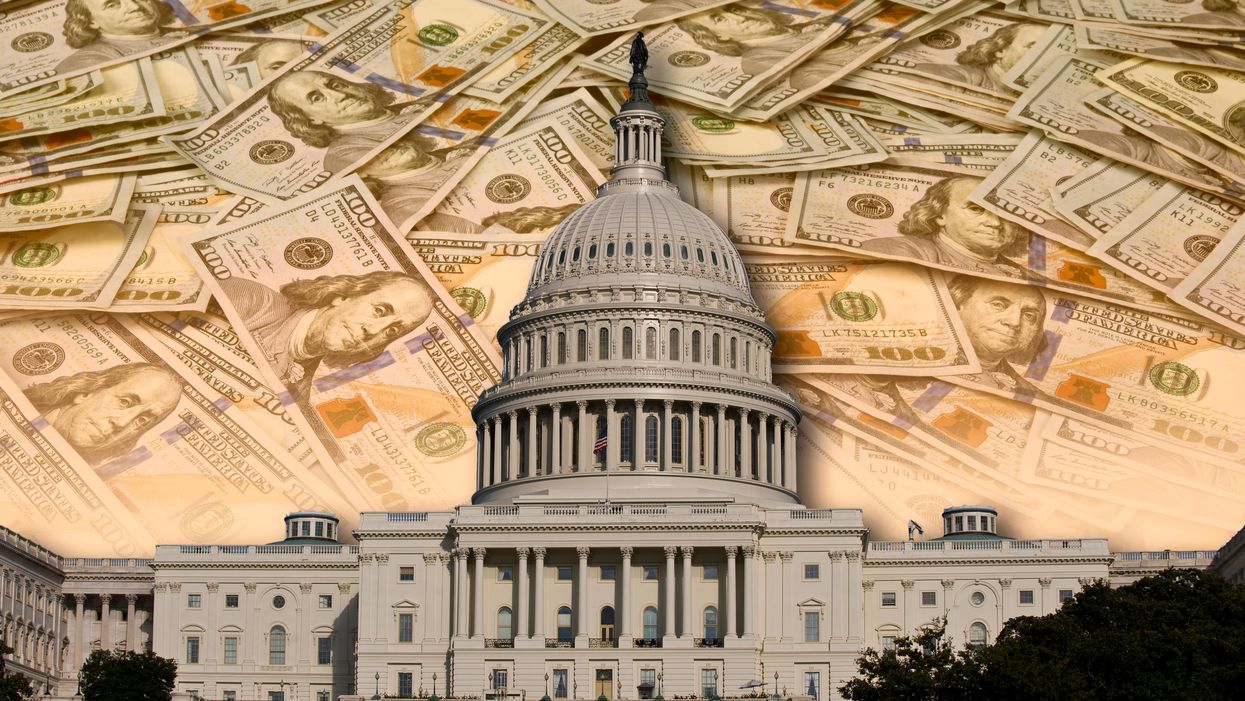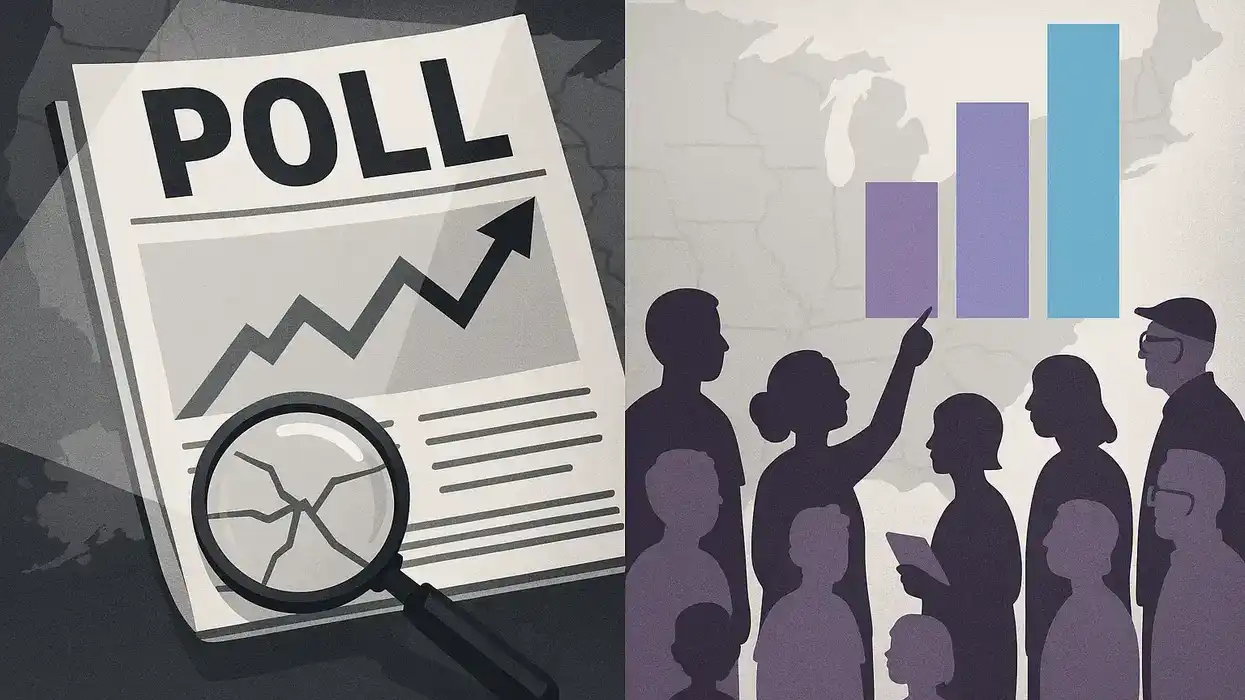Plans for giving members of Congress the first salary increase in a decade blew up this week, and some "good government" advocates are sad about it. Why?
Congressional pay is among the most perennially fraught topics on Capitol Hill. House members and senators will always be delighted with bigger paychecks but don't want to be seen grabbing for them. Advocates for improving the functioning of Congress, thereby strengthening it in balance-of-powers fights with the president, argue that having the legislative branch spend more on itself is essential.
The House almost always takes the lead on deciding whether to accept an annual cost-of-living increase for all members. Despite bipartisan behind-the-scenes maneuvering designed to grease the wheels for a 3 percent raise in January, the Democratic leadership abandoned the idea when a bloc of their members cried out that they'd lose their seats as a consequence.
Beyond the political messiness, however, lie serious arguments for and against a boost in member pay. Here is a guide to the pros and cons central to the debate:
Reasons in favor
1. No worker's pay should be frozen for so long
What's at stake here is a cost-of-living adjustment, not a merit increase. The annual salary for almost all members was set at $174,000 back in 2009 and has stayed the same since. (A handful of House and Senate leaders make a bit more, and their pay has been frozen too.) That's because Congress has passed legislation annually denying lawmakers an inflationary increase that was designed to be automatic – under a system created 30 years ago to tamp down on pay raise politics by routinizing the increases, and pegging them to the Consumer Price Index, similar to pay for other federal workers and Social Security recipients.
This is the longest lawmakers have gone without a change in compensation since the decade ending in 1965. Had all the COLAs been permitted, member pay would now be $207,000. But advocates for a 2020 raise, led by House Majority Leader Steny Hoyer, aren't talking about making up for a decade's worth of lost wages.
They proposed an uptick of $4,500, or 3 percent, in line with the Labor Department's estimate of the national average increase in wages and salaries for the year ended in March.
2. Members are professionals with a job in two places
Senators and House members should be paid a like other professionals with serious responsibilities; they're called on to make significant decisions – allocating billions in taxpayer money each year, setting tax rates, regulating commerce and overseeing the military and foreign policy.
The public should want to people from all walks of life, and all corners of the economy, to have sufficient means to be able to serve in Congress.
And members should have enough confidence in their worth, and respect for their institution, to support a lawmaker payroll of $93 million – equal to what the Pentagon spent a couple of years ago to trick out Afghan soldiers in new camouflage that wasn't designed with the desert in mind.
When the current member salary was set, it equaled the median 2009 income for a dentist. Now, after staying stagnant, it's equivalent to typical pay for a nurse anesthetist.
Besides, health care workers aren't called on to do their work in two locations, one of them among the most expensive cities in the country. (This week Zillow listed just eight small places to rent on Capitol Hill for less than $1,500 a month.) Very few members move their families to D.C., opting to service just one mortgage back home while living a pretty Spartan existence on nights they are obligated to be at the Capitol.
Infamously, several dozen sleep in their House offices, freeloading off taxpayers in order to save money and give off a bit of a rebellious outsider vibe – all the while debasing the congressional culture a bit more. The proposed $5,400 raise would at least be enough to put $40 or so a night toward real lodgings when Congress is in session.
3. Paying members more allows them to pay their staff more
Members are never going to pay their staffers more than they make themselves. So for the past decade salaries for various categories of aides have been capped at between 95 percent and 99 percent of congressional pay.
Legislative counsels, committee investigators, chiefs of staff and House and Senate party leadership assistants are called on to shoulder a bulk of Capitol Hill's workload and keep the lion's share of its institutional memories. Yet average tenure for senior staffers has been in steady decline, because trade associations and K Street firms think nothing of paying a lot more than $172,000 for some policymaking knowledge and political acumen.
At least some aides would be willing to remain longer, putting dedication to public service ahead of easier living, if they knew they'd get modest salary increases – possible only once member pay was raised.
Reasons against
1. Rewards ought to be tied to better performance
When the current pay freeze started, in December 2009, Gallup pegged the congressional approval rating at 25 percent. The number has crested that mark in only two months since and has most of the time wallowed in the middle teens.
This reflects the clear understanding outside the Beltway of something that brings agreement to insiders of all stripes: Congress is as broken as it's been in modern times.
But the deepening dysfunction and polarized partisanship are only the most obvious reasons why the legislative output has become so small and the oversight muscles so weak. It's also because members, repeatedly lambasted by their constituents as doing inept work in a woefully inadequate institution, have rewarded that opinion by making sure voters' views are perpetuated.
Congress has moved relentlessly in recent years to limit its own capabilities and capacities for writing bills and also keeping an eye on the rest of the government, mainly by gutting budgets for legislative and oversight staff but also by doing nothing to combat a Hill culture of inefficiency and technical ignorance.
The Select Committee on the Modernization of Congress was created this year to tackle these problems in the House, and it's off to a refreshing bipartisan start with a package designed to bring more transparency to the place – for example, by unifying the software lawmakers use for legislating.
Instituting a big list of technical and personnel reforms for bringing the Hill into the 21st century, then proving the changes were worthwhile with a boost of lawmaking productivity, seems like a modest prerequisite for getting a raise.
2. Permission to raise staff pay means nothing without payroll
Members have some budget exercises to do if they're going to claim with straight faces that their motivation for hiking their own wages is to raise the ceiling for staffers.
Members have broad latitude in allocating a lump sum budget for personnel, supplies, travel back home and office rent in their districts. But the proposed House spending bill for next year anticipates, at most, a 2 percent increase in these budgets – less than the amount of the would-be member COLA. Even then, next year's expected $602 million grand total for member offices would be 10 percent less than when the decade began.
So in real terms, staff pay is significantly less than it used to be.
One of the modernization panel's main deliberations will be about increasing the member office payroll so lawmakers do not have to choose between compensating all their aides inadequately or laying off some so the others can earn a bit mote. Unless the salary pool is expanded, in other words, raising the wage cap is a hollow gesture.
3. There's no bipartisan will to do it, and lots of partisan anxiety
"Rep. Smith gives himself a raise" is such a toxic headline that it's only politically survivable if his opponents decline to attack – especially if Smith represents a swing district, is vulnerable to a primary challenge or has positioned himself as a fierce critic of most domestic government spending levels. And that amounts to a critical mass of today's House members.
A series of COLAs went through without much attack ad fuss in the previous decade because of non-aggression pacts negotiated in advance by House leaders of both parties. That's what Hoyer thought he had engineered this time by securing buy-in from the House GOP top two, Minority Leader Kevin McCarthy and Whip Steve Scalise.
But then the House Republican campaign organization threw a partisan rhetorical bomb, labeling Democrats "socialist elitists" for even considering the idea. Not only did that destroy the bipartisan leadership détente, but it also caused heartburn and fury for a score of Democrats – mainly of them new arrivals from purple districts who are already readying for tough Republican challengers next year.
Once those Democrats pressed their leaders to drop the idea, almost all the GOP members signaled they were prepared to put fealty to fiscal restraint (and a desire to embarrass the Democrats) ahead of their own bank balances.
The bottom line was bipartisan agreement only on this point: Accepting a COLA that's politically poisoned makes no sense.



















